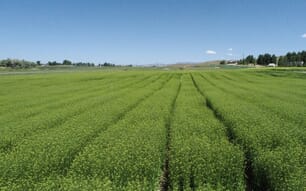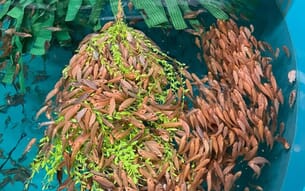The report, Impacts of salmon lice emanating from salmon farms on wild Atlantic salmon and sea trout, was commissioned by Salmon & Trout Conservation Scotland (S&TC Scotland) and was based on “all the available and up to date research on the impact of sea lice from salmon farms”.
It was published today by the Norwegian Institute for Nature Research (NINA), Norway’s leading institution for applied ecological research. It is authored by Prof Eva B Thorstad and Dr Bengt Finstad, both internationally acknowledged for their expertise in sea lice biology and the interactions between salmon farming and wild fish.
Andrew Graham-Stewart, Director of S&TC Scotland, said: “For many years we have maintained that the Scottish Government’s position – that there is ‘no evidence’ in Scotland that sea lice from salmon farming damage wild salmon and sea trout ‘populations’ – is untenable. This report substantiates our view that it would be very odd indeed if the Scottish situation was markedly different to elsewhere. We do after all have the same sea lice, which all too often Scottish salmon farm operators are incapable of keeping under control, and the same wild fish.”
The claims were however, hutly disputed by Scottish salmon farming representatives.
Scott Landsburgh, chief executive of Scottish Salmon Producers Organisation, said: “It’s a stretch to describe this as a “new” report when the authors have rewritten much of their own work a second time round. Quantity is no substitute for quality in scientific debate.
“We are as aware as the S&TCS of the state of wild salmon stocks and have consistently pointed out that scientific research has suggested that any impact of sea lice from farms on wild populations is minimal. It is interesting, however, that there is no acknowledgment of the impact of climate change which is undoubtedly having an effect on wild and farmed fish health across the board.”
Official inquiry
In June, the Scottish Parliament’s Rural Economy and Connectivity Committee, in response to a formal petition lodged in the Scottish Parliament in February 2016 by S&TC Scotland seeking protection for wild salmonids from sea lice from Scottish salmon farms, agreed to launch an Inquiry (scheduled for 2018) into salmon farming in Scotland and the issues raised by S&TC Scotland.
Mr Graham-Stewart added: “The forthcoming parliamentary inquiry provides a timely opportunity to redress the balance between the drive for growth of the salmon farming industry, at all costs, and the need to protect wild fish. We trust that the committees conducting the inquiry will pay close heed to the conclusions of this important report.”
Paul Knight, CEO of S&TC (UK) and co-Chair of the NGOs at the North Atlantic Salmon Conservation Organisation (NASCO), said: “At NASCO’s annual meetings Scotland has been repeatedly challenged for its systematic denial of any significant negative impacts caused by salmon farming in the west Highlands and Islands on wild salmon and sea trout. This report vindicates the NGO stance that sea lice emanating from salmon farms are harmful to populations of wild fish, often devastatingly so. Scotland is no exception.”




